Table of contents
The spicy-tasting garden cress ( Lepidium sativum L.) is a popular raw food snack ( organic ?) when eaten raw and a good source of vitamins in winter.
Garden cress - Use in the kitchen:
Garden cress (or cress) belongs to the cruciferous family like mustard, radish or watercress. It shares its characteristic aroma with them. The slightly sharp, peppery and spicy taste is due to the mustard oil glycosides. In addition to the cotyledons of the cress, young leaves, flowers, seed capsules, seeds and roots can be eaten raw.
How do you eat cress? The piquant leaves are used as a raw ingredient in vegan or vegetarian dishes - such as spring quark, dips, pestos, salads, herb butter, spreads and sandwiches - and as a garnish. Or you can enjoy it pure as a raw snack, freshly harvested from the seed trays on the windowsill. Along with other herbs, garden cress is often a component of Frankfurt green sauce. The flowers are a decorative raw food ingredient for plant-based recipes.
With its spicy taste, cress rounds off steamed vegetable dishes, vegetable stuffings, herb potatoes, soups, vegan omelettes, vegetable soups and other warm dishes.
The radish-like roots are elastic and juicy. They taste great as a spicy vegetable or, very finely chopped, pickled in oil. Sliced into shavings, they can be eaten with salty spreads or herb snacks.
Fresh or dried seeds are used in many different ways for seasoning and when ripe they can be mashed with vinegar and salt to make a mustard-like paste.
When mixed with water, the seeds form a jelly-like mucus. This property as a vegetable gelling, binding or thickening agent can be used in vegan or vegetarian cuisine.
Vegan recipe for bread spread with cress and avocado:
Ingredients (for 4 people): 2 cress boxes (organic); 1 avocado, pitted; 1 garlic clove, peeled; 50 g macadamia nuts ; 1 tbsp balsamic vinegar ; salt;pepper.
Preparation: Cut the sprouts just above the substrate surface with scissors; then process the raw organic garden cress together with the nuts and garlic in a food processor until the desired consistency is reached. Then add the avocado pulp, vinegar and spices and puree everything into a spreadable vegan spread. Add a little water or cold-pressed rapeseed oil as needed.
Vegan wholefood recipes with garden cress can be found under the note: " Recipes that have the most of this ingredient ".
| Not only vegans or vegetarians should read this: Vegans often eat unhealthily. Avoidable nutritional errors. |
Shopping - where to buy garden cress?
In addition to sprouting seeds, you can also buy fresh sprouts in grocery stores. These are available in small boxes with growing media or cut and packaged in plastic containers.
Grocery stores such as Coop, Migros, Denner, Volg, Spar, Aldi, Lidl, Rewe, Edeka or Hofer and organic supermarkets such as Denn's Biomarkt or Alnatura offer fresh sprouts in conventional or organic quality. You can also get fresh organic cress online, directly from the farmer, at the weekly market, in health food stores, in organic shops or via a subscription box (seasonal box / green box). The sprouts are in season all year round in stores.
Storing garden cress:
Cut sprouts can be stored in a well-sealable container or plastic bag in the refrigerator. If uncut, they should always be kept moist in a box. This way, the sprouts will last for a few to several days.
Ingredients - Garden cress nutritional values - Calories:
100 g of fresh garden cress has a calorie content of 32 kcal. The cress nutrients consist of 0.7 g of fats, 5.5 g of carbohydrates and 2.6 g of proteins. The ingredients vitamin K and vitamin C are particularly noteworthy. With 542 µg of vitamin K per 100 g, this corresponds to seven times the daily requirement. The vitamin C content of 69 mg/100g covers a large part of the daily requirement. 1
Fresh chard (830 µg/100g), raw dandelion (778 µg/100g) or raw kale (705 µg/100g) have higher levels of vitamin K. Lower levels can be found in raw nettle (499 µg/100g), raw spinach (483 µg/100g) or raw radicchio (255 µg/100g). 1
Other green plants rich in vitamin C include raw garlic mustard (261 mg/100g), raw wild garlic (150 mg/100g), fresh ground elder (140 mg/100g), raw kale (120 mg/100g) or raw nasturtium (60 mg/100g). 1
Phytochemical studies confirm the presence of flavonoids, coumarins, sulfur glycosides, triterpenes, sterols and imidazole alkaloids. The most important secondary plant ingredients include glucosinolates, which are responsible for the sharp taste. 2,3 Other garden cress ingredients are essential oil and benzyl mustard oil. 3
The seeds contain 20-25% oil. This consists of 46.8% polyunsaturated fatty acids (PUFAs) and 37.6% monounsaturated fatty acids (MUFAs). Alpha-linolenic acid makes up the largest proportion of fatty acids in the oil. Carotenoids (provitamin A) and tocopherols (vitamin E) are natural antioxidants in the oil and protect it from rancidity. 2
The complete garden cress nutritional information, the coverage of the daily requirement and comparison values with other ingredients can be found in our nutrient tables in CLICK FOR below the ingredients picture.
Health aspects - effects:
Is garden cress healthy? Cress is a healthy food and a welcome source of vitamin C all year round.
Studies on postmenopausal women with osteoporosis and chronic periodontitis show a beneficial effect of Lepidium sativum on increasing bone mass. The combined use of garden cress and alendronate enhanced this effect. 4
Clinical studies confirm the protective and therapeutic effects of garden cress, which is used in herbal therapies for the treatment of diabetes mellitus. 5 In diabetic and non-diabetic rats, hypoglycemic activity was also observed when an aqueous extract was administered. Insulin secretion itself remained unaffected. 2
A systematic review shows the therapeutic potential of Lepidium sativum for the treatment of respiratory diseases such as asthma, bronchitis and cough. The plant mediates the necessary expansion of the bronchi (bronchodilation) via several biochemical signaling pathways (anticholinergic, Ca(++)-antagonistic and PDE-inhibiting). 6,7 Asthmatics experienced relief of asthma symptoms and an improvement in lung function. 2
A study on cancer cell lines confirms the antioxidant capacity of Lepidium sativum. In the scientific study, the traditional medicinal plant proved to be immune-boosting and specifically effective against colon cancer cells. 8
Animal experiments with rats provide evidence of anti-inflammatory and analgesic effects of Lepidium sativum in induced gastric ulcers. 9 Seed extract also inhibited castor oil-induced diarrhea in rats. The results indicate antidiarrheal and spasmolytic (antispasmodic) activities, possibly mediated via muscarinic receptors and Ca(++) channels. 10
Dangers - Intolerances - Side effects:
If you have a sensitive stomach or intestines, you should carefully increase the amount of cress sprouts you eat to avoid irritation of the mucous membranes or digestive problems. There are no known serious side effects or toxic effects 2 for the seeds of Lepidium sativum.
Folk medicine - natural medicine:
In folk medicine, cress is used to treat fungal and bacterial infections, to combat amoeba infestation and to expel worms. The traditional medicinal plant is used against diarrhea, dysentery or hiccups, as well as to promote digestion (seed powder), to speed up menstruation, to treat scurvy, to stimulate kidney function, for gum disease and for respiratory diseases (bronchitis, asthma). 2,3
Externally, grated roots and parts of the plant can be applied as a poultice ('plaster'). 3 Seed paste is used, for example, to relieve pain and swelling in cases of rheumatism, to heal broken bones, and also for chapped lips or sunburn. 2
Breastfeeding women can incorporate garden cress into their diet to increase milk secretion. For an effective remedy to increase breast milk, boil a teaspoon of Lepidium sativum seeds in 200 ml of water for half an hour and add a tablespoon of honey. 2
In Ethiopia, Lepidium sativum is one of the most common plant species traditionally used to treat malaria, along with garlic ( Allium sativum), papaya ( Carica papaya), Vernonia amygdalina and Croton macrostachyus. 11
Occurrence - Origin:
The original distribution area of Lepidium sativum L. includes Egypt, Ethiopia, the Arabian Peninsula, Afghanistan, Iran, Iraq, Israel, Jordan, Lebanon, Syria, Turkey and Pakistan. Naturalized and widely cultivated, garden cress is now found in Kenya, India, Japan, China, Australia, New Zealand, Canada, Argentina, Chile, New Caledonia and the United States. 12
Growing in the garden or as a potted plant:
You can grow cress in a bed in the garden. The staggered sowing takes place from spring to late autumn at 14-day intervals. Well-drained soil and a location in the sun or partial shade are ideal. In milder regions, the hardy plant can be grown all year round, possibly under glass in winter. The leaves are picked when they are very young, about one to two weeks after sowing, when they are about 5-13 cm high. The roots can be dug up in autumn; the seed capsules can be left to ripen or harvested unripe. 13,14,15
For the balcony, you can use flat boxes with enriched sand or other containers such as flower pots with soil. In the house, special germination jars and germination devices for the windowsill are popular. Kitchen towels or fleece are also suitable. The seeds are scattered evenly and covered with a thin layer of substrate if necessary, as the plant is a light germinator. The fast-growing seedlings should always be kept moist. After eight to ten days, they can be harvested and used as raw food in the kitchen.
The annual cress initially has three-lobed cotyledons. The 8-12 cm long young leaves that develop from them are linear to pinnate and grow on upright or slightly branched shoots. In summer, tiny, white or purple-white flowers with four petals appear. These produce flat, round seed capsules that are up to 7 mm long. 14
Garden cress comes in different varieties, including red, yellow and black. 'Broad Leaved' is ready for harvest after 10-40 days, 'Curled' after 10-30 days. 'Greek' is fast growing with an excellent peppery taste and the 'Persian' variety, popular in the Middle East, has broadly toothed leaves. 14
Cultivation - Harvest:
Various cultivation substrates are used for the professional cultivation of garden cress. Cultivation fleece made of hemp or flax fibers is widely used, on which the seedlings grow without additional fertilizer. This saves time and money. Under optimal growth conditions, the sprouts are ready for harvest after six to six and a half days. 16
The cultivation fleeces have largely replaced other substrates. The substrates include foamed plastics, cellulose flakes and perlite - a volcanic rock that requires a lot of energy to process. Disposing of these substrates is more complex because the residues contain biodegradable and non-degradable components. Cultivation fleeces, on the other hand, can be disposed of in the organic waste bin along with the plant residues or composted. 16
Possibility of confusion:
Possibility of confusion exists with other cress species from the same genus ( Lepidium) - or from other genera: bitter cress ( Cardamine amara), nasturtium ( Tropaeolum), winter cress ( Barbarea vulgaris) or sweet-seed cress ( Arabidopsis thaliana). With the common watercress ( Nasturtium officinale) there is only a similarity in name and no close botanical relationship.
We are not aware of any risk of confusion with poisonous counterparts.
General information:
Garden cress ( Lepidium sativum L.) is a plant species from the genus Cress ( Lepidium). This belongs to the family Brassicaceae or Cruciferae.
Alternative names:
Colloquially, the plant is often referred to as cress. We are not aware of any other alternative names in German. Incorrect spellings are Kräse or Krässe or Garten Kresse.
In English, garden cress is called garden cress, pepperwort, tongue cress, town cress, curly cress, mustard and cress, garden pepper cress, pepperwort, pepper grass or poor man's pepper.
Cress in Turkish is called tere. In other languages, garden cress is called halim (Urdu), Կոտեմ (Kotem = Armenian), حب الرشاد (Hab al Rashad = Arabic) - in Czech it is called řeřicha zahradní. 17 Tsitsmati (Georgian) often means watercress, but can also refer to garden cress 17.
Keywords for the use of garden cress:
Mucus from garden cress seeds (halim seeds) is used as a substitute for gum arabic and tragacanth. To treat stomach problems in farm animals, the seeds are mixed with drinking water. The seeds are also known as an insect repellent. 2
In bioindication, the so-called cress test is used to detect contamination of water, air and soil based on germination behavior.
Literature - Sources:
Bibliography - 17 Sources
| 1. | USDA (United States Department of Agriculture). Nährstofftabellen. |
| 2. | Prajapati VD, Maheriya PM, Jani GK et al. Lepidium sativum Linn.: a current addition to the family of mucilage and its applications. Int J Biol Macromol. 2014;65: 72-80. |
| 3. | Fleischhauer SG, Guthmann J, Spiegelberger R. Essbare Wildpflanzen. 200 Arten bestimmen und verwenden. Augsburg: Verlagsgruppe Weltbild GmbH; 3. Auflage. 2013. |
| 4. | El Kilani NS, Hazzaa HH, Hemoud HES, Imam O. Clinical and radiographic assessment of single or combined treatment with Lepidium sativum and "alendr." of non-surgically treated chronic periodontitis in postmenopausal osteoporotic women. J Int Acad Periodontol. 2019;21(1): 20-28. |
| 5. | Ajebli M, Khan H, Eddouks M. Natural alkaloids and diabetes mellitus: a review. Endocr Metab Immune Disord Drug Targets. 2021;21(1): 111-130. |
| 6. | Khan AU, Gilani AH. Natural products useful in respiratory disorders: focus on side-effect neutralizing combinations. Phytother Res. 2015;29(9): 1265-1285. |
| 7. | Rehman NU, Khan AU, Alkharfy KM, Gilani AH. Pharmacological basis for the medicinal use of Lepidium sativum in airways disorders. Evid Based Complement Alternat Med. 2012;2012: 596524. |
| 8. | Ibrahim EH, Ghramh HA, Alshehri A, et al. Lepidium sativum and its biogenic silver nanoparticles activate immune cells and induce apoptosis and cell cycle arrest in ht-29 colon cancer cells. Journal of Biomaterials and Tissue Engineering. 2021;11(2): 195-209. |
| 9. | Rahimi R, Shams-Ardekani MR, Abdollahi M. A review of the efficacy of traditional Iranian medicine for inflammatory bowel disease. World J Gastroenterol. 2010;16(36): 4504-4514. |
| 10. | Rehman NU, Mehmood MH, Alkharfy KM, Gilani AH. Studies on antidiarrheal and antispasmodic activities of Lepidium sativum crude extract in rats. Phytother Res. 2012;26(1): 136-141. |
| 11. | Suleman S, Beyene Tufa T, Kebebe D et al. Treatment of malaria and related symptoms using traditional herbal medicine in Ethiopia. J Ethnopharmacol. 2018;213: 262-279. |
| 12. | Npgsweb.ars-grin.gov Lepidium sativum L. |
| 13. | Hirsch DP. Der Gemüsegarten des Moosewood Restaurants. Kreative Gartenarbeit für den abenteuerlustigen Koch. Ten Speed Press; 2005. |
| 14. | Bown D. Kräuter. Die grosse Enzyklopädie. Anbau und Verwendung. München: Dorling Kindersley; 2. Auflage. 2015. |
| 15. | Pahlow M. Das grosse Buch der Heilpflanzen. Gesund durch die Heilkräfte der Natur. Hamburg: Nikol Verlagsgesellschaft mbH & Co. KG; 8. Auflage. 2019. |
| 16. | Carus M et al. Studie zur Markt- und Konkurrenzsituation bei Naturfasern und Naturfaser-Werkstoffen (Deutschland und EU). Gülzower Fachgespräche. 2008; Band 26:198-199. |
| 17. | Gernot-katzers-spice-pages.com Gartenkresse (Lepidium sativum L.), Brunnenkresse (Nasturtium officinale L.) und Kapuzinerkresse (Tropaeolum majus L.). |

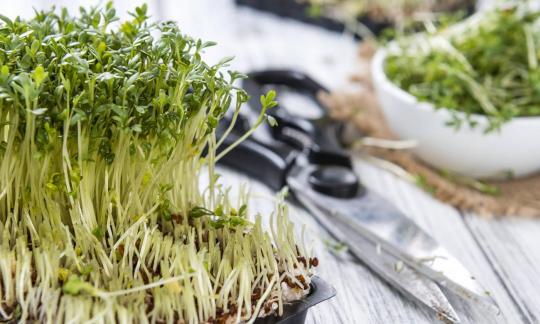

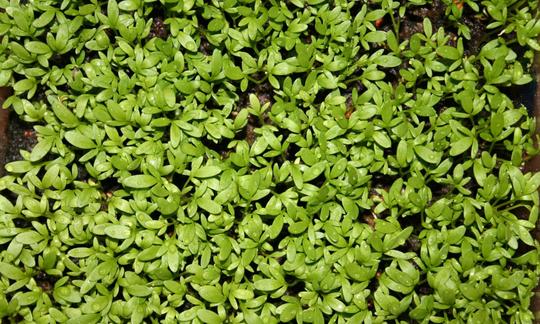

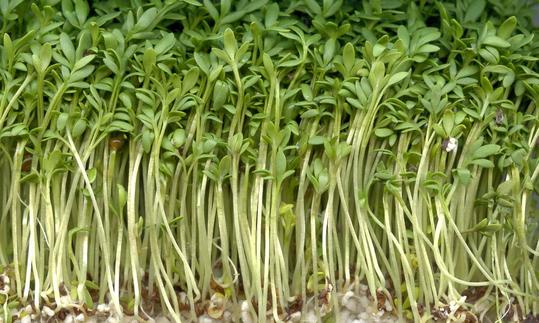

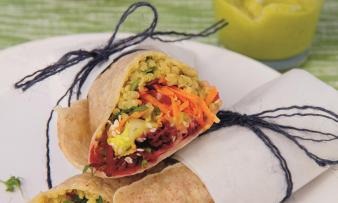
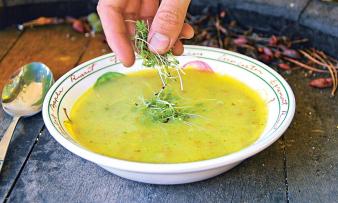
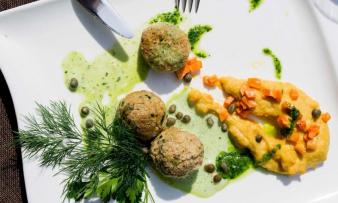





Comments